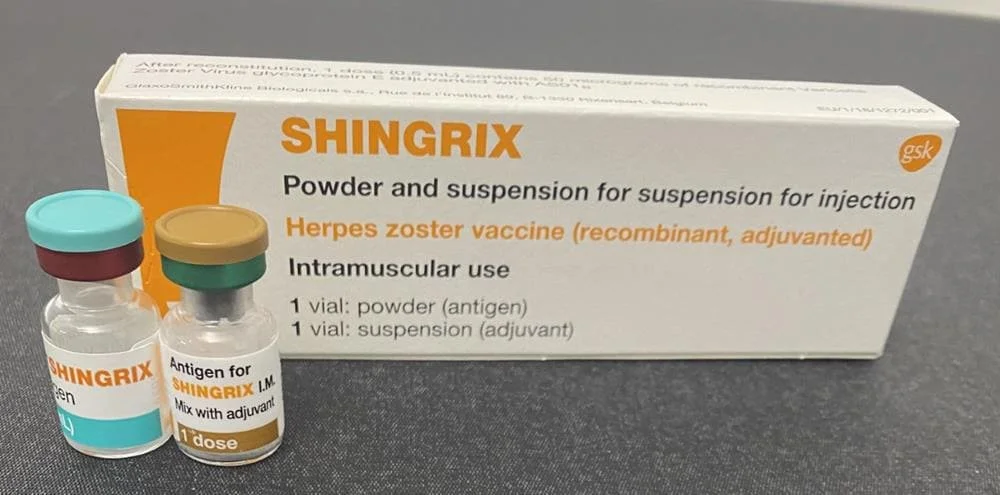How Soon Do Side Effects Start After Shingrix?

Shingrix is a vaccine used to prevent shingles, a viral infection that causes a painful rash. It is approved for use in adults aged 50 years and older. Shingrix is given as a series of two doses, with the second dose administered 2 to 6 months after the first dose. The vaccine is given by injection into the muscle of the upper arm.
Shingrix is a recombinant subunit vaccine, meaning it contains only a specific part of the virus that causes shingles. The vaccine works by stimulating the immune system to produce antibodies against the virus, which can prevent infection or reduce the severity of the disease if infection does occur.
Clinical studies have shown that Shingrix is highly effective in preventing shingles and its complications. In one study, the vaccine was 97% effective in preventing shingles in adults aged 50 years and older. The vaccine also reduced the risk of postherpetic neuralgia, a painful condition that can develop after shingles, by 90%.

How is Shingrix Administered?
Shingrix is administered as an intramuscular injection into the upper arm by a healthcare provider. It is given in a series of two doses, with the second dose given 2 to 6 months after the first dose. The injection is given in the deltoid muscle, which is located in the upper arm.
Before administering the vaccine, the healthcare provider will clean the injection site with an antiseptic solution to reduce the risk of infection. They will then use a sterile needle and syringe to inject the vaccine into the muscle.
After the injection, the healthcare provider will observe the patient for any immediate reactions or side effects. Patients may be advised to wait in the clinic for a short period of time to ensure that they do not experience any serious allergic reactions.
It is important to receive both doses of the Shingrix vaccine to ensure maximum protection against shingles. The second dose should be given within the recommended time frame of 2 to 6 months after the first dose. If a patient misses the recommended time frame for the second dose, they should still receive the vaccine as soon as possible.
It is also important to inform the healthcare provider of any allergies or medical conditions before receiving the Shingrix vaccine. Patients who are allergic to any of the components of the vaccine or who have a weakened immune system may not be eligible for vaccination.
What are the Side Effects of Shingrix?
Like all vaccines, Shingrix can cause some side effects, although most people tolerate it well. Here are some more details on the potential side effects of Shingrix:
1. Pain, redness, or swelling at the injection site: This is the most common side effect of Shingrix, affecting around 8 in 10 people. It is usually mild to moderate and resolves on its own within a few days.
2. Fatigue: Feeling tired or weak is a common side effect of Shingrix, affecting around 1 in 3 people. This can last for a few days after vaccination.
3. Headache: Headaches are a common side effect of Shingrix, affecting around 1 in 3 people. This can last for a few days after vaccination.
4. Muscle pain: Muscle pain or soreness is a common side effect of Shingrix, affecting around 1 in 3 people. This can last for a few days after vaccination.
5. Chills: Feeling cold or shivery is a common side effect of Shingrix, affecting around 1 in 3 people. This can last for a few days after vaccination.
6. Fever: A mild fever is a common side effect of Shingrix, affecting around 1 in 6 people. This can last for a few days after vaccination.
7. Nausea: Feeling sick to your stomach or queasy is a common side effect of Shingrix, affecting around 1 in 10 people. This can last for a few days after vaccination.
These side effects are generally mild to moderate and resolve on their own within a few days. However, if they persist or become severe, you should contact your healthcare provider.
In rare cases, Shingrix can cause more serious side effects, such as an allergic reaction. Symptoms of an allergic reaction may include difficulty breathing, swelling of the face or throat, hives, and a fast heartbeat. If you experience any of these symptoms after receiving Shingrix, seek immediate medical attention.
It is important to note that the benefits of getting vaccinated with Shingrix far outweigh the risks of potential side effects, as shingles can cause significant pain and discomfort. If you have concerns about the side effects of Shingrix, talk to your healthcare provider.
How Soon Do Side Effects Start After Shingrix?
The most common side effects of Shingrix such as pain, swelling at the injection site fever, headache, and fatigue usually start within two days of getting the vaccine and last for one to three days.
Less common side effects of Shingrix like chills, nausea, and muscle pain usually start within two to three days of getting the vaccine and may last for several days. Rarely, people may experience an allergic reaction to Shingrix, which can cause symptoms such as hives, difficulty breathing, and swelling of the face and throat. If you experience any of these symptoms after getting the Shingrix vaccine, seek medical attention immediately.
How To Manage Shingrix Side Effects
Here are some tips to help manage the common side effects of Shingrix:
1. Pain and swelling at the injection site: Apply a cool, damp cloth or ice pack to the injection site for a few minutes at a time. You can also take an over-the-counter pain reliever such as acetaminophen or ibuprofen, but avoid aspirin.
2. Fatigue: Take it easy and get plenty of rest. Avoid strenuous activities and try to stay hydrated.
3. Headache: You can take an over-the-counter pain reliever such as acetaminophen or ibuprofen. Try to rest and stay hydrated.
4. Fever and chills: These symptoms are usually mild and go away on their own within a day or two. Drink plenty of fluids and get plenty of rest.
5. Nausea: Avoid heavy or spicy meals and stick to bland foods like crackers, toast, and bananas. Drink plenty of fluids to stay hydrated.
It’s important to note that these side effects are usually mild and go away on their own within a few days. However, if you experience severe or persistent side effects, or if you have any concerns about the vaccine, speak with your healthcare provider.




